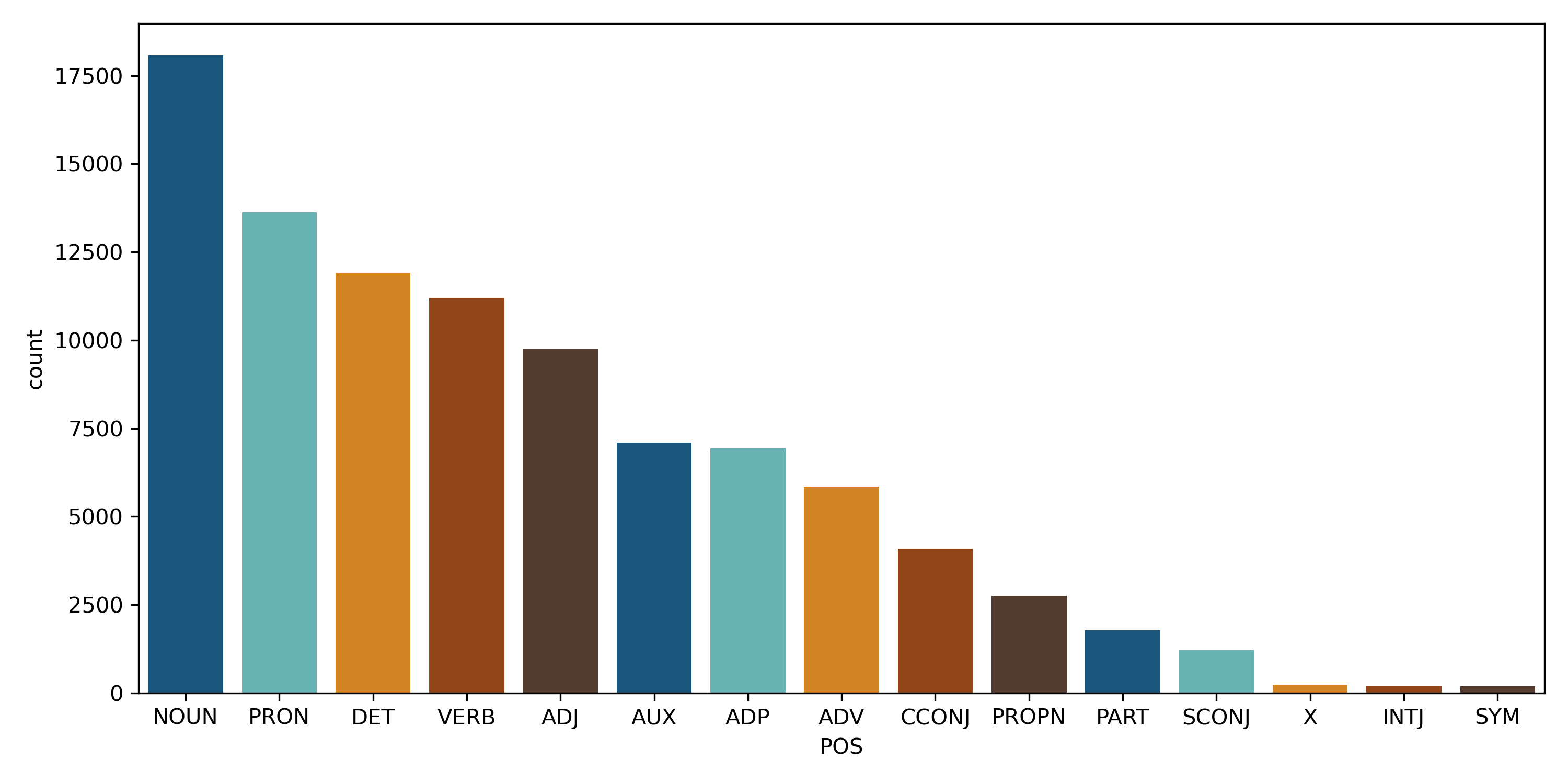A Quick Guide to Noun Phrase Chunking
What is Noun Phrase Chunking?
In the last post, I covered Part of Speech Tagging, which is the process of tagging words with their grammatical parts. Here I will cover Noun Chunking or Noun Phrase Chunking, or Base Noun Phrases 1. Chunking builds upon these grammatical parts to identify groups of words that go together to form symbolic meaning. This can be an adjective that goes along with a noun or a group of nouns related to each other. Below is a simple example using Spacy to demonstrate how it works.
import spacy
nlp = spacy.load("en_core_web_sm")
doc = nlp("Five Words in Orange Neon")
for chunk in doc.noun_chunks:
print(chunk.text)
Five Words
Orange Neon
In this simple five-word sentence, we can see how it identified Five Words and Orange Neon as the chunks.
For this post, we'll take this blob of text about Chatbots2 and compare both Spacy's and NLTK's methods for chunking:
A chatbot (also known as a talkbot, chatterbot, Bot, IM bot, interactive agent, or Artificial Conversational Entity) is a computer program or an artificial intelligence which conducts a conversation via auditory or textual methods. Such programs are often designed to convincingly simulate how a human would behave as a conversational partner, thereby passing the Turing test. Chatbots are typically used in dialog systems for various practical purposes including customer service or information acquisition. Some chatterbots use sophisticated natural language processing systems, but many simpler systems scan for keywords within the input, then pull a reply with the most matching keywords, or the most similar wording pattern, from a database.
Noun Phrase Chunking with NLTK
Let's start with NLTK. I mentioned in the post on Part of Speech Tagging that having a solid understanding of NLTK will give you a good foundation in Natural Language Processing. Some methods require a little more effort to implement than other NLP libraries; however, NLTK is a solid foundation to build upon.
To chunk with NLTK, you use RegEx to pull out the different chunks that you wish to work with. It can take a little bit of experimentation, but it's quite flexible overall. First, let's import the needed parts of NLTK.
import nltk
from nltk.tokenize import word_tokenize
from nltk import word_tokenize, pos_tag
And next, we'll set up a function that will help us extract the different chunks based on a RegEx pattern that we want to identify.
def reg_chunker(sent, expression):
sent = pos_tag(word_tokenize(sent))
cp = nltk.RegexpParser(expression)
chunked = cp.parse(sent)
for chunk in chunked.subtrees(filter=lambda t: t.label() == 'NP'):
print(chunk)
Notice that this function utilizes the pos_tag function that tags each word with its part of speech. This clearly shows how one is building upon the other. Then we're using the RegexParser to pull out the tags we're interested in3. Let's start with nouncombinations.
# Chunk 1: Noun followed by Noun
reg_chunker(raw, r'NP: {<NN.?>+<NN.?>}')
(NP IM/NNP bot/NN)
(NP Artificial/NNP Conversational/NNP Entity/NNP)
(NP computer/NN program/NN)
(NP Turing/NNP test/NN)
(NP dialog/NN systems/NNS)
(NP customer/NN service/NN)
(NP information/NN acquisition/NN)
(NP language/NN processing/NN systems/NNS)
(NP simpler/NN systems/NNS)
(NP wording/NN pattern/NN)
We can see interesting chunks identified such as Artificial Conversational Entity, Turing test, customer service, and language processing systems. These are more useful than the individual words. Let's look at adjectives paired with nouns.
# Chunk 2: Adjective Follwed by Singular Noun
reg_chunker(raw, r'NP: {<JJ>+<NN>}')
(NP interactive/JJ agent/NN)
(NP artificial/JJ intelligence/NN)
(NP conversational/JJ partner/NN)
(NP sophisticated/JJ natural/JJ language/NN)
(NP many/JJ simpler/NN)
(NP similar/JJ wording/NN)
Similar to the output above, we have interactive agent, artificial intelligence, conversational partner, and sophisticated natural language all showing us usage patterns. You can experiment with different regex patterns pulling out what you think is most useful.
Noun Phrase Chunking with Spacy
Let's take a look at how Spacy handles chunking. Spacy is a modern and more sophisticated library for NLP and tends to have a simpler interface for many operations. Let's start with our imports and then explore how Spacy handles chunking.
import spacy
nlp = spacy.load("en_core_web_sm")
Starting with a simple sentence from their docs, we can see how Spacy works.
doc = nlp("Autonomous cars shift insurance liability toward manufacturers")
for chunk in doc.noun_chunks:
print(chunk.text)
Autonomous cars
insurance liability
manufacturers
Super easy, no fussing with RegEx and automatically pulling out different word combinations without needing to specify POS tags. Let's do the same with our paragraph.
doc = nlp(raw)
for chunk in doc.noun_chunks:
print(chunk.text)
A chatbot
a talkbot
chatterbot
Bot
IM bot
interactive agent
Artificial Conversational Entity
a computer program
an artificial intelligence
which
a conversation
auditory or textual methods
Such programs
a human
a conversational partner
the Turing test
Chatbots
dialog systems
various practical purposes
customer service
information acquisition
Some chatterbots
sophisticated natural language processing systems
many simpler systems
keywords
the input
a reply
the most matching keywords
the most similar wording pattern
a database
You can see here that there is a high degree of overlap of the terms extracted via our two chunking patterns with NLTK. Spacy will also include the determiner in the chunking process. We could also do this with NLTK, but our RegEx wasn't looking to extract it. One of the biggest differences you'll see is that Spacy automatically includes all different chunk combinations where a noun is the head word.
Conclusion
From here, you can leverage Noun Chunks in your analysis to better identify what customers are talking about. In the post on POS tagging, I showed how you could separate products (nouns) from how people are talking about them. With Noun Phrase tagging, you can extract more specific product information for your analysis. I have a quick demo of this available; check out the full notebook on Gitub.



